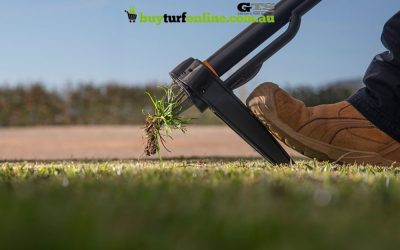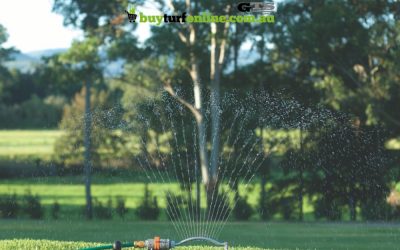Lawn Care After Heavy Rain
Quick Links
Caring For Your Lawn After Heavy Lawn
Do you love dancing in the rain?
So do both animals and plants. For plants and grass, this is the best time to get in shape. But sometimes a lot of rain can be too much.
Your lawn also loves rain but it can’t survive more than 4 days submerged underwater. When the rain starts pouring, you should know what to do and how to take care of your turf.
Heavy rain can flood your lawn, it can cause soil erosion, bring in unwanted debris, and can disrupt healthy roots.
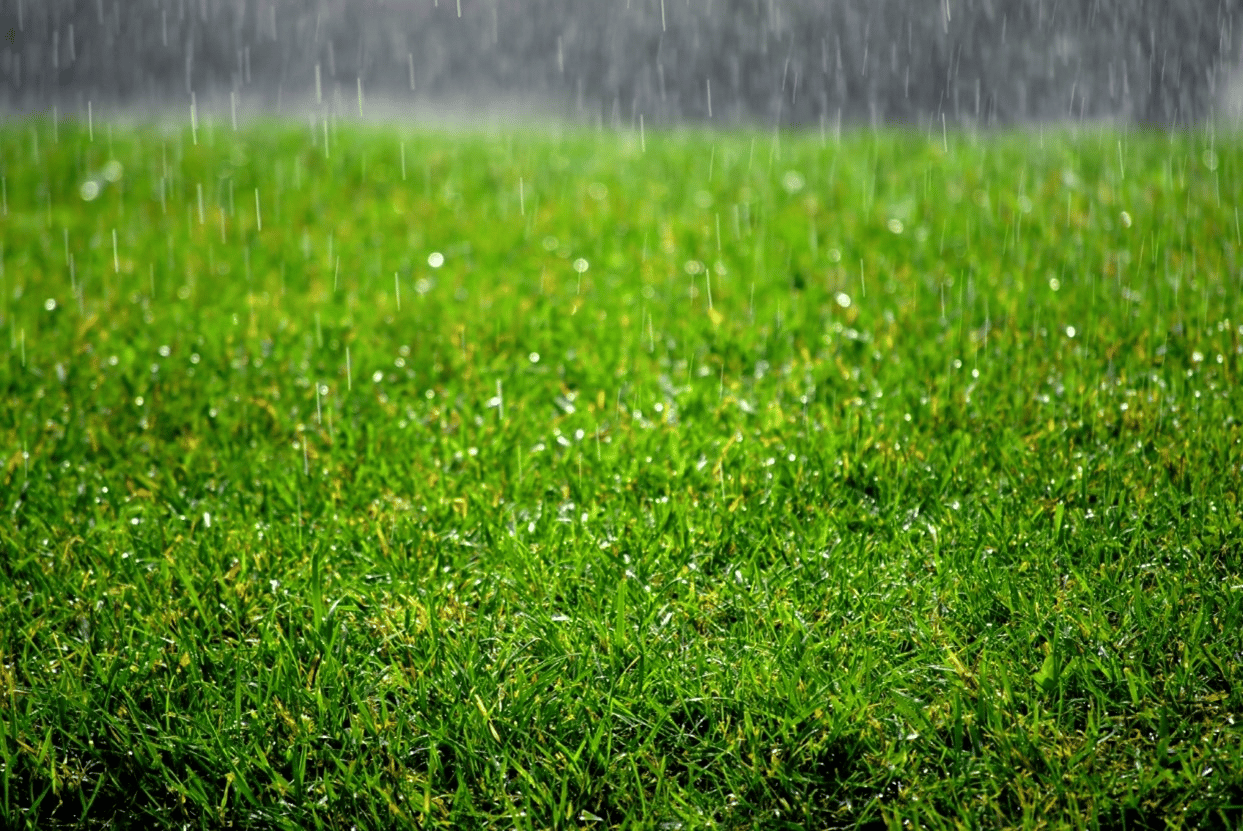
In this article, discover how to take advantage of the rain instead of letting too much water destroy your lawn. Here we explain how to keep your lawn safe and make the most of heavy rain.
Wet Grass
First thing first, don’t walk on wet grass, as it might damage the lawn.
Mowing wet grass is also a bad idea because wet freshly cut grass blades are most prone to lawn diseases.
The best way to know if you can walk on it is by looking at the footprint. If you leave no footprints behind while walking, it indicates you can walk on it.
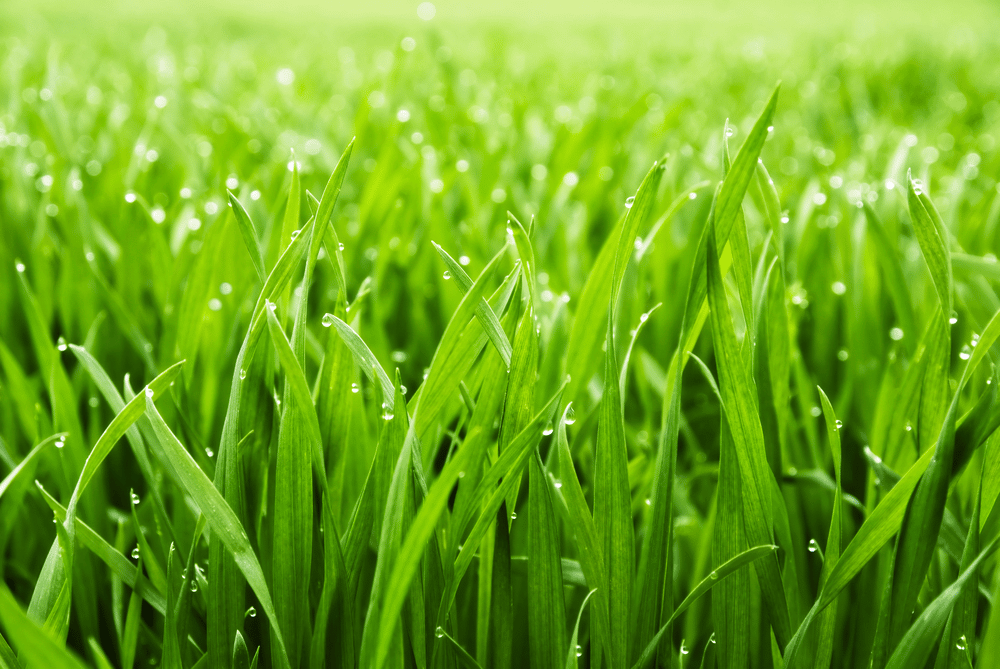
Alternatively, you can take a handful of soil and form a ball in your hand, it should crumble when pressed. If the squeezed ball of soil drips water, it’s still too wet.
Depending on how much rain is pouring in your area and how frequently will impact how your lawn copes with flooding.
The more rain you get and quickly, the soggier your lawn will get.
The best thing you can do is wait for the water level to completely drain out before you proceed with any lawn activities.
If you notice flooded areas, make notes so that you can level the ground or improve the drainage in the future.
Clear Debris
Remove anything that keeps your wet lawn from drying; it could be children’s toys, branches, glass, nails, metal objects, or leaves.
Debris can trap moisture and can cause lawn diseases such as red thread, brown spots, fairy rings, and others.
But again, you don’t want to start cleaning the debris right after the heavy rains. When the ground gets dry enough to not leave a footprint or rut, then only you can start cleaning up.
Make sure to remove moss and watch out for fairy rings. Moss can be easily raked away but you might need professional treatment if you don’t want them to grow back.
A fairy ring is a form of mushroom that has green grass in the centre. Make sure to remove these types of mushrooms completely from their roots.
Remove Soil & Silt Deposits
After heavy rains, there is a high chance of soil and silt deposits.
After cleaning the debris, the next step is to scrape or spray off any soil and silt deposits with the help of a pressure washer or garden hose.
Any remaining silt needs to be broken up by scratching with a steel garden rake.
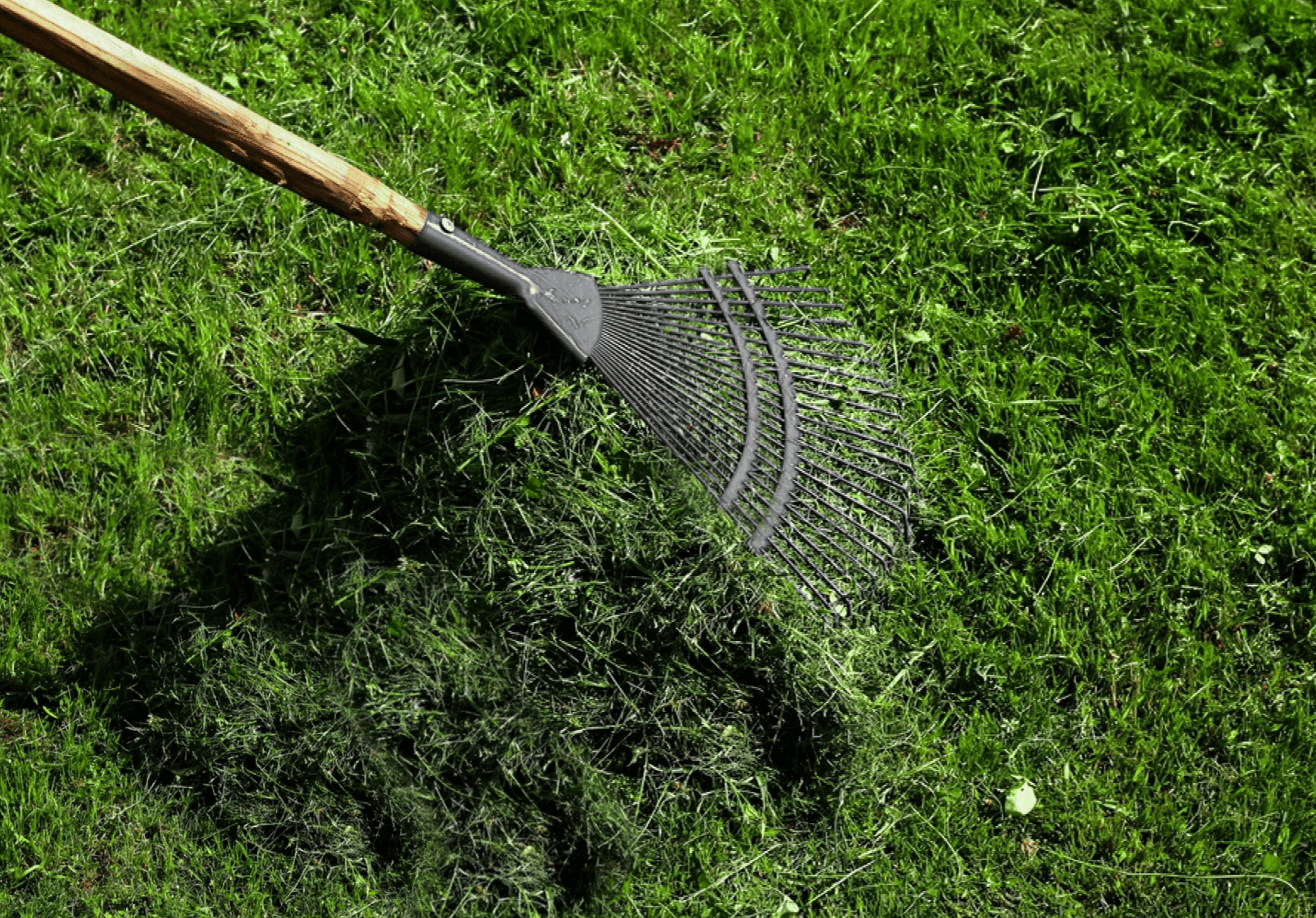
If a lawn is covered under 2 inches of silt for less than 4 days, it may recover.
On the other hand, if it stays covered for up to four days or more it may not recover and might need to be re-established from scratch
Aerate & Top Dress
Over time your lawn gets more and more compressed making it hard for the water, nutrients, and air to reach a deeper root zone.
As it rains, water can not pass through the compressed turf which makes it even harder for the roots to breathe and absorb nutrients.
This is where the need for aeration comes in. Aeration is a simple process of making small holes to avoid soil compaction.
A gentle stabbing session with the help of a garden fork, aerator sandals, or power aerator can help drain the water around any pools or puddles.
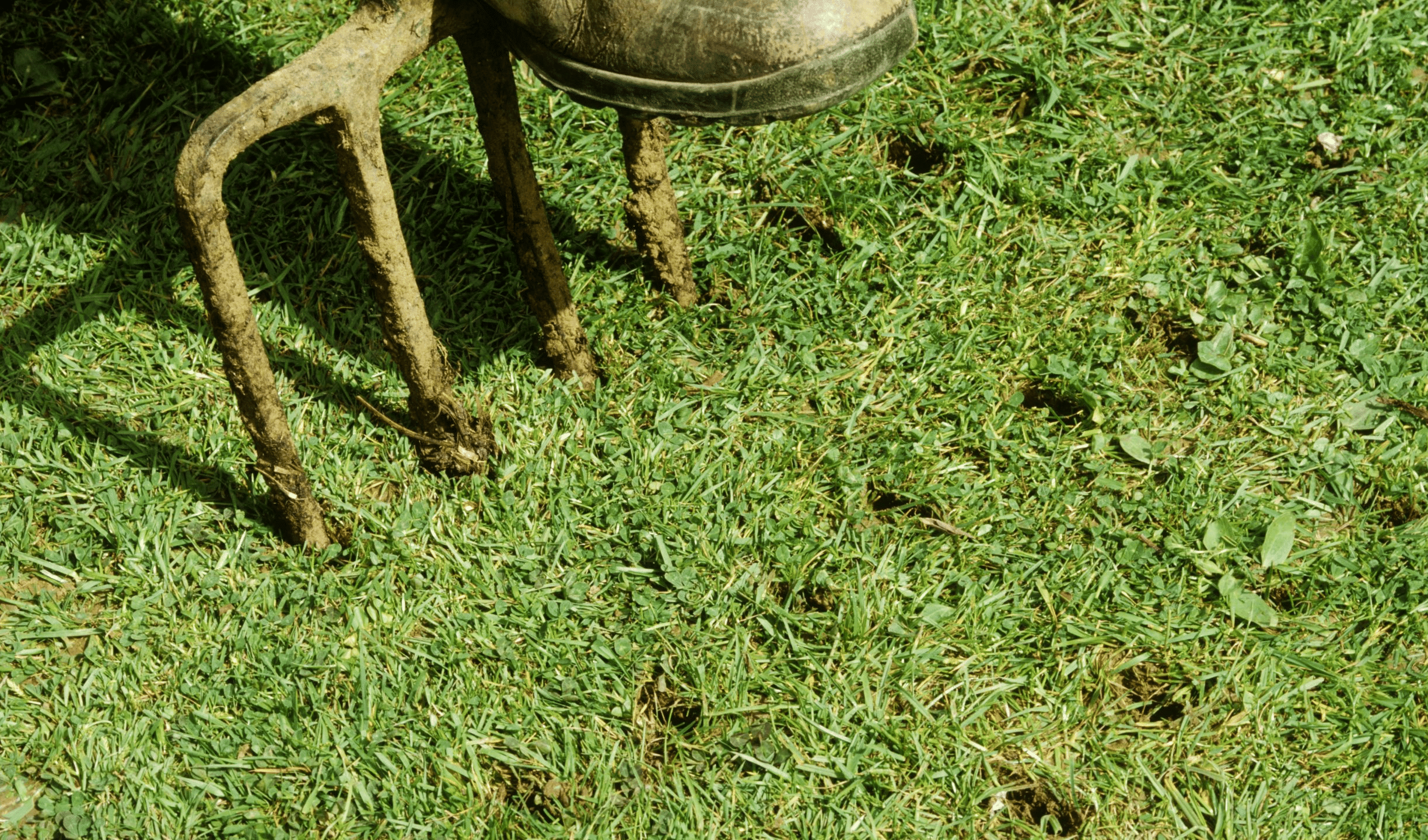
All you need to do is make small 5cm holes around 10cm apart across the whole lawn area using a garden fork.
If you own a large lawn, you might need an aerating roller or do the job yourself with the help of aerator sandals.
After the rain has finished don’t forget to top-dress your lawn. In most cases, the minerals and nutrients should be washed away by the rainwater.
Top-dressing your lawn after heavy rain helps to reduce the accumulation of dead grass. It also helps increase nutrient retention and improves drainage.
Feed
As mentioned earlier, most lawns experience a high amount of nutrients being washed away by the heavy rains.
You should feed your lawn some nutrients to bring the turf to its best form. The best time to fertilise a lawn is while the turf is still a little moist.
Make sure to keep an eye on the weather forecast. You don’t want to feed your lawn if there is more rain coming as it will just wash away.
Fertilisers can be either in the form of granules or liquid. All you need to do is fill the spreader or sprayer and walk around feeding your lawn.
Returf Patches
Generally, rainfall doesn’t cause irregular brown patches but in some cases, heavy rainfall can.
If you do see a brown patch after too much rain, you should re-turf it as soon as possible. Irregular turf can spoil the entire look of your lawn.
Before re-turfing unsightly patches make sure to find out the root cause so that you can treat it accordingly.
While it may be after heavy rain, these patches may be from another issue caused by too much rain. For example, a grub problem is one of the common causes of irregular brown patches.
So, how do you re-turf patches? There are two options,
Patching with new turf is a better option because seeds take a lengthy period to germinate and grow. After waiting for so long still it might not give you the best result.
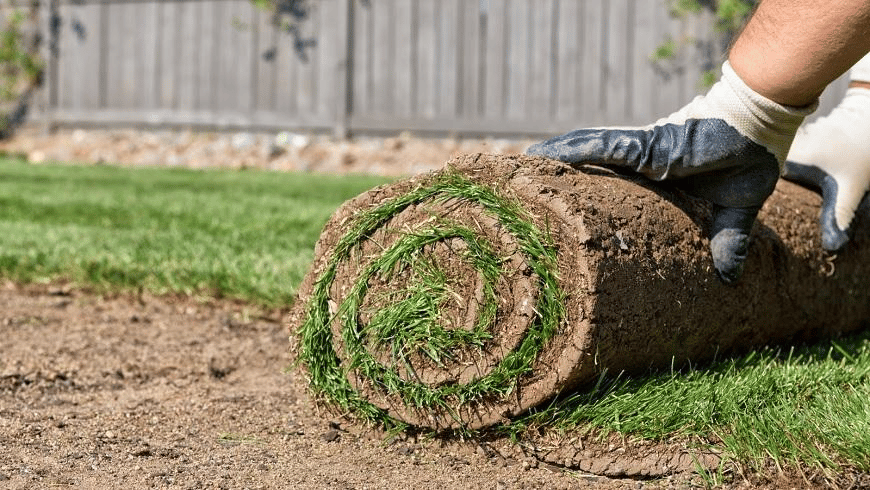
Re-turfing with a new piece of turf is a better option because it’s an easy process.
All you have to do is cut out the bare area with a spade to the same depth as your new turf.
Remove old turf and soil, leaving a hole. Put a layer of lawn dressing into the hole and then measure the hole.
Cut the new turf with a sharp knife to the same size as the hole.
Place the turf into the hole and push down the edges for a neat join. Water it well and avoid walking in the area for at least 7 days.

read more!
recent posts
Poolside Turf: Choosing and Maintaining Grass Around Pools
There’s nothing quite like stepping out of a swimming pool onto soft, lush grass. But when it comes to finding the best grass for around a pool, not all lawns are created equal. Chlorine pools, heavy foot traffic, and the unforgiving Australian sun can take a toll on...
Keeping Your Lawn Green and Healthy During the Summer Heat
Discover the best grass options for your lawn with our complete guide. Make informed choices for a lush, healthy yard. Read more to find your ideal grass!
Summer Lawn Weeds: Prevention and Management
Discover the best grass options for your lawn with our complete guide. Make informed choices for a lush, healthy yard. Read more to find your ideal grass!
The Ultimate Watering Guide for Summer Lawns
Discover the best grass options for your lawn with our complete guide. Make informed choices for a lush, healthy yard. Read more to find your ideal grass!

Our Turf
TifTuf Bermuda
Buy Turf Online © 2019 All Rights Reserved. | Proudly Designed and Developed by Sydney ICT



